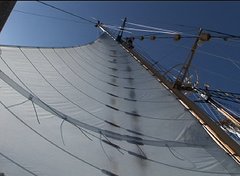 We sailed for science. We traversed the Pacific Ocean on a quantitative crossing most easily explained by the numbers. Over 3000 nautical miles travelled. 5 island stops. 45 science stations. 20,344 miles of wire deployed. 3,425 copepods counted. 74,640 liters of water passed through our flow-through system.
We sailed for science. We traversed the Pacific Ocean on a quantitative crossing most easily explained by the numbers. Over 3000 nautical miles travelled. 5 island stops. 45 science stations. 20,344 miles of wire deployed. 3,425 copepods counted. 74,640 liters of water passed through our flow-through system.But like the best of science, we cannot rely only on the data. How can you quantify (although chl-a measurements certainly try) the way the bioluminescence in the wake of the ship mirrors the stars? What photograph can capture the view of the pink fore reef of Caroline Atoll as seen from the forem'st? What trigonometric equation can calculate the parallel planes of a snorkeler with arms outstretched above manta ray? What thermometer could explain the frozen sweetness of an ice cream sandwich on a humid afternoon on Rangiroa? How could science even begin to analyze the art of a midnight Tim-Tam slam?
We sailed for science, but we sailed for so much more than that. For making seven knots on a starboard tack under the four lowers. For late night jam sessions under the stars. For dolphins under the bowsprint and jumping mola mola on the starboard quarter. For dawn watch star frenzies and celestial fixes. For pin-balling blindly from your rack to the quarterdeck for mid watch. For gybing. For eating freshly caught tuna on a table that moves with the swell. For deck showers after a long day of snorkeling. For transitioning from pollywogs to shellbacks. For supporting our watch-mates as JWO or JLO. For five men fighting for five hours in full drag. For fresh lychee and passion fruit and pamplemousse.
 And throughout all these moments, the Bobby C transformed from a vessel into a home. How long will "over there" still be replaced by NE x N or two points on the starboard beam or 314 degrees true? How long will it take for a galley to become a kitchen again? How many times will we try to turn port or starboard instead of left or right? How long will it take to start feeling at ease on land again?
And throughout all these moments, the Bobby C transformed from a vessel into a home. How long will "over there" still be replaced by NE x N or two points on the starboard beam or 314 degrees true? How long will it take for a galley to become a kitchen again? How many times will we try to turn port or starboard instead of left or right? How long will it take to start feeling at ease on land again?Being at sea for five weeks creates this strange dichotomy. Standing at the bow and looking out at the horizon, it's hard not to feel infinitesimally small. But there's something about sailing that makes you feel so much larger than yourself, too-a piece of a vessel and a crew and a family making way across the Pacific.
And for all of this, I give my unending thanks to Momma Seamans and all of the little parts-human and otherwise-that form her. She kept us safe on our long journey. She kept us challenged-from calling a sail for the first time to identifying new creatures in a 100-count. She kept us excited and thoughtful and aware and sometimes a little bit seasick and fulfilled and exhausted and most importantly always together. 39 humans who I am now honored to call some of my closest friends and mentors, always together.
As Oahu materializes on the horizon, it's hard to comprehend that this voyage is ending. But the ship must sail on, and so must we. To the Bobby C, may you have fair winds and favorable seas wherever you voyage. And to us-this crew and this family-may our connections to the sea and to each other remain forever intertwined.
Until we sail again,
-Meghan Shea









